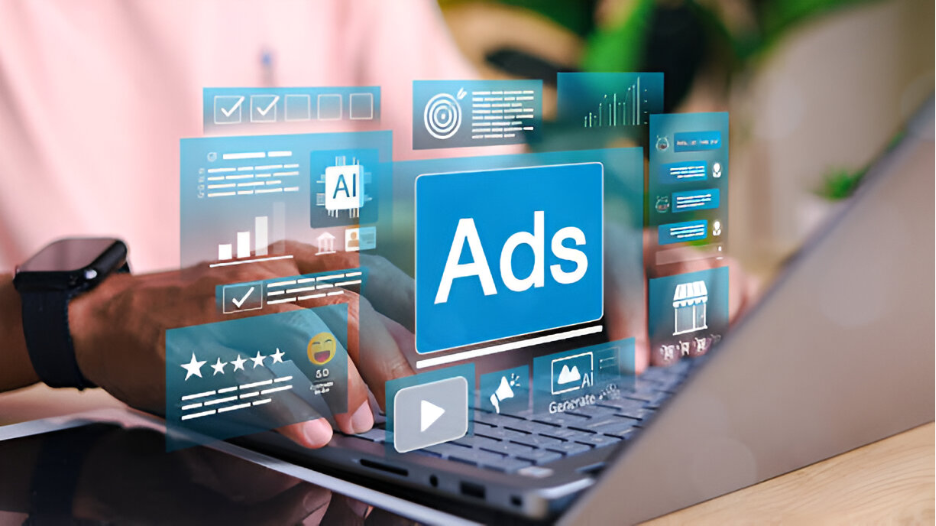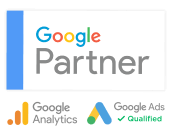Level Up Your Content Game: 5 Content Marketing Hacks That Actually Work
In the ever-evolving world of digital marketing, content remains king. However, not just any content will do; it takes strategic and innovative approaches to stand out and engage your audience effectively. In this blog, we will explore five game-changing content marketing hacks that have been proven to deliver results.
These strategies go beyond the basics, offering fresh perspectives and actionable tactics to help you enhance your content marketing efforts. Whether you're a seasoned marketer or just starting, these hacks will provide you with the tools you need to captivate your audience and drive real engagement. Stay tuned as we dive into each hack and uncover how you can implement them to elevate your content game.

Introduction to Content Marketing: Understanding Its Importance in Digital Strategy
The Role of Content in Digital Marketing
Content is the cornerstone of digital marketing, providing the necessary substance to connect with and engage your target audience. As consumers constantly seek valuable and informative content, a well-crafted content strategy can play a pivotal role in establishing your brand as a thought leader. By consistently delivering high-quality content, businesses can build trust, foster relationships, and ultimately drive conversions.
Benefits of Effective Content Marketing
Effective content marketing offers a multitude of benefits, including increased brand awareness, improved audience engagement, and higher rankings in search engine results. By creating content that resonates with your audience, you can attract and retain customers who are genuinely interested in your products or services. Additionally, content marketing is a cost-effective way to generate leads and nurture them through the sales funnel.
Integrating Content into Your Digital Strategy
Integrating content into your digital marketing strategy ensures a cohesive approach that leverages various channels to reach your audience. From social media and email marketing to SEO and PPC campaigns, content serves as the foundation that ties all these elements together. A strategic content marketing plan can help you achieve specific business goals by aligning your content with the needs and preferences of your audience.
Measuring the Success of Your Content Marketing Efforts
To truly understand the impact of your content marketing efforts, it’s essential to track key performance indicators (KPIs) such as website traffic, engagement rates, and conversion rates. Utilizing analytics tools can provide valuable insights into what aspects of your content strategy are working and where there is room for improvement. By continuously monitoring and adjusting your approach, you can ensure that your content marketing remains effective and aligned with your overall digital strategy.
Hack #1: Leveraging User-Generated Content for Authentic Engagement
What is User-Generated Content?
User-generated content (UGC) refers to any form of content—such as text, reviews, images, videos, and social media posts—that is created and shared by consumers or users of a brand rather than the brand itself. UGC is inherently authentic and inherently trustworthy because it comes from real customers who have experienced your products or services firsthand.
Benefits of User-Generated Content
1. Authenticity and Trust: Since UGC is created by real users, it is perceived as more authentic and trustworthy compared to branded content. This can significantly influence potential customers' purchasing decisions.
2. Cost-Effective Content Creation: Encouraging your audience to generate and share content reduces the burden of content creation on your marketing team, saving time and resources.
3. Enhanced Engagement: UGC fosters a sense of community and involvement, encouraging users to interact with your brand and with each other, leading to increased engagement.
4. SEO Benefits: High-quality UGC can improve your website's SEO, as fresh, relevant content boosts search engine rankings and drives organic traffic.
How to Encourage User-Generated Content
1. Create Competitions and Challenges: Stimulate your audience to create content by organizing contests or challenges. Offer incentives such as discounts, freebies, or exclusive access to events or products.
2. Feature User Content: Regularly showcase UGC on your social media channels, website, or newsletters. Highlighting customer stories and testimonials can motivate others to share their experiences as well.
3. Engage with Your Community: Actively engage with users who share content related to your brand. Respond to their posts, leave comments, and show appreciation for their contributions.
4. Hashtag Campaigns: Create a unique and branded hashtag for users to include in their posts. This not only makes it easy to find and curate UGC but also enhances brand visibility on social platforms.
Best Practices for Leveraging User-Generated Content
1. Obtain Proper Permissions: Always seek permission from users before sharing their content on your platforms to avoid any potential legal issues.
2. Maintain Quality Control: While UGC is valuable, it's essential to curate the content to maintain quality and relevance to your brand message.
3. Measure Impact: Track the performance of UGC campaigns by analyzing metrics such as engagement rates, reach, and conversions. Use this data to refine your approach and optimize future campaigns.
By leveraging user-generated content, brands can harness the power of their communities to create authentic and engaging content. This approach not only builds trust and credibility but also fosters a strong sense of brand loyalty and community among users.
Hack #2: The Power of Storytelling: Crafting Compelling Narratives
Why Storytelling Matters
Storytelling is an age-old practice that remains powerful in the digital age. At its core, storytelling is about creating a connection with your audience by sharing narratives that resonate emotionally and intellectually. In the context of digital marketing, storytelling can be a transformative tool that humanizes your brand, making it more relatable and memorable.
Building Emotional Connections
One of the key benefits of effective storytelling is its ability to build emotional connections with your audience. By sharing stories that evoke empathy, joy, or inspiration, brands can create a sense of loyalty and trust. Emotional storytelling can make your messages more impactful, prompting your audience to take action, whether that means making a purchase, sharing your content, or engaging with your brand more deeply.
Elements of a Compelling Story
To craft a compelling narrative, certain elements must be present:
1. Relatable Characters: Introduce characters that your audience can relate to. This could be customers, employees, or even the brand itself.
2. Conflict and Resolution: Every good story involves some form of conflict and resolution. This tension keeps the audience engaged and invested in the outcome.
3. Authenticity: Authenticity is crucial. Your stories should reflect your brand’s values and mission genuinely.
4. Clear Message: Ensure that your story has a clear message or moral that aligns with your brand's goals.
Examples of Effective Storytelling
Several brands have mastered the art of storytelling with great success. For instance, Dove’s "Real Beauty" campaign features real women and their personal stories about beauty, creating an emotional narrative that challenges societal norms. Another example is Apple’s product launch events, which often include stories about how their technology positively impacts users' lives. These narratives not only highlight the product features but also create an emotional connection with the audience.
Integrating Storytelling into Your Content Strategy
To integrate storytelling into your content strategy, start by identifying the core values and messages you want to convey. Create a content calendar that outlines the different stories you plan to share, and leverage various formats such as videos, blog posts, and social media updates to tell your stories. It’s also beneficial to encourage your audience to share their own stories about your brand, further fostering a sense of community.
Measuring the Success of Storytelling
To measure the impact of your storytelling efforts, monitor key metrics such as engagement rates, shares, comments, and conversions. Qualitative feedback through comments or direct messages can offer insights into how your stories are resonating with your audience. By assessing this data, you can refine your storytelling approach and ensure that your narratives continue to engage and inspire your audience.
By harnessing the power of storytelling, brands can create compelling narratives that not only captivate their audience but also drive meaningful engagement and foster long-term loyalty.

Hack #3: Utilizing Data-Driven Insights to Optimize Content Performance
The Importance of Data-Driven Strategies
In today's digital landscape, leveraging data-driven insights is crucial for optimizing content performance. Data provides a clear, quantifiable picture of what works and what doesn’t, allowing brands to make informed decisions. Without the use of data, content strategies can be based on assumptions or guesswork, leading to suboptimal results.
Identifying Relevant Metrics
To start, it's essential to identify which metrics align with your content goals. Common metrics include engagement rates, click-through rates, conversion rates, and bounce rates. Analyzing these metrics helps in understanding what kind of content resonates with your audience and drives desired actions.
Tools and Technologies for Data Analysis
Several tools can help collect and analyze data to optimize content performance. Google Analytics, for instance, offers comprehensive insights into website traffic and user behavior. Social media platforms provide their analytics tools for tracking performance metrics such as likes, shares, and comments. Additionally, specialized content management systems often come with built-in analytics functionalities.
Implementing A/B Testing
A/B testing, or split testing, is a method used to compare two versions of a piece of content to see which one performs better. By changing one variable at a time—like headlines, images, or calls-to-action—and analyzing the results, brands can optimize their content based on what garners the best response from their audience.
Personalization and Segmentation
Data-driven insights can also enable personalized content and audience segmentation. By analyzing user data, brands can tailor content to different audience segments, increasing relevance and engagement. Personalization can be as simple as addressing the user by their name or as complex as crafting content tailored to their unique preferences and behavior.
Real-Time Analytics
Real-time analytics allows brands to make swift decisions based on the most current data. If a piece of content is underperforming, adjustments can be made immediately to improve its reach and impact. This agility is essential for staying relevant and responsive to audience needs.
Measuring Long-Term Impact
It's important not only to track instant results but also to measure the long-term impact of content strategies. By analyzing trends over time, brands can gain deeper insights into the effectiveness of their content and make strategic adjustments for sustained performance improvements.
Continuous Improvement
Data-driven insights promote a culture of continuous improvement. By regularly reviewing data and performance metrics, brands can identify areas of success as well as opportunities for enhancement. This iterative process ensures that content strategies remain effective and aligned with audience preferences.
Case Studies and Success Stories
Brands that effectively utilize data-driven insights often see significant improvements in content performance. For example, Netflix uses viewer data to inform content creation and recommendation algorithms, leading to higher viewer retention and satisfaction. Similarly, e-commerce companies like Amazon leverage user data to personalize shopping experiences, resulting in increased sales and customer loyalty.
By incorporating data-driven insights into their content strategy, brands can optimize their performance, ensure alignment with audience needs, and achieve their marketing objectives more effectively.
Hack #4: Embracing Interactive Content to Boost Audience Participation
The Power of Interactive Content
Interactive content has emerged as a powerful tool for engaging audiences in today's digital landscape. Unlike static content, which can often be passive, interactive content demands participation, making it more memorable and engaging. Whether it's through quizzes, polls, interactive infographics, or videos, this dynamic form of content encourages users to interact, providing a more immersive experience.
Types of Interactive Content
There are various types of interactive content that brands can leverage to boost audience participation:
- Quizzes and Polls: These allow users to engage in a fun, low-commitment manner while also gaining valuable insights into audience preferences and opinions.
- Interactive Infographics: By allowing users to click and explore different segments, interactive infographics can present complex information in an engaging and easily digestible format.
- Interactive Videos: Videos that include clickable elements, branches, or decision points can keep users engaged longer and tailor the experience to their interests.
- Calculators and Assessments: Tools that offer personalized results based on user inputs make the content highly relevant and useful.
- Surveys and Forms: These can be used to gather feedback while maintaining user engagement through thoughtful design and interactive elements.
Benefits of Interactive Content
Interactive content offers numerous benefits for both brands and their audiences:
- Increased Engagement: By requiring user interaction, this type of content holds attention better than static content.
- Enhanced Learning and Retention: Interactive elements can help break down complex subjects, making them easier to understand and remember.
- Data Collection: Brands can collect valuable data on user preferences and behavior through interactive content.
- Improved User Experience: Interactive content can make the user's journey more enjoyable and tailored, leading to higher satisfaction.
- Viral Potential: Engaging and fun interactive content is more likely to be shared on social media, extending its reach.
Integrating Interactive Content into Your Strategy
To integrate interactive content into your content strategy effectively, start by identifying the types that align best with your goals and audience preferences. Experiment with different formats to see what resonates, and ensure your content provides genuine value and engagement to your users. Moreover, using analytics tools to track interactions and performance can help you refine and optimize your approach over time.
Case Studies of Successful Interactive Content
Brands across various industries have successfully implemented interactive content to boost audience participation. For example, BuzzFeed's personality quizzes are immensely popular, driving high engagement and social shares. Similarly, National Geographic's interactive infographics provide a compelling way to explore data-driven stories, enhancing user experience and understanding.
By embracing interactive content, brands can foster deeper connections with their audience, encouraging active participation and ultimately driving greater engagement and loyalty.

Hack #5: Repurposing Content Across Multiple Platforms for Maximum Reach
The Importance of Content Repurposing
Content repurposing is a strategic approach to get the most out of your content by recycling and adapting it for use on multiple platforms. This not only saves time and resources but also maximizes the reach and impact of your content. By giving existing content new life in different formats, you can ensure it reaches a wider audience and continues to provide value.
Types of Content to Repurpose
Almost any type of content can be repurposed. Here are some examples:
- Blog Posts: Turn long-form articles into bite-sized social media posts, create infographics, or convert them into podcast episodes.
- Webinars and Videos: Transcribe videos or webinars into blog posts or ebooks, and create short video clips or audiograms for social media.
- Infographics: Break down into individual graphics for social media or integrate into blog posts and presentations.
- Podcasts: Convert episodes into blog articles, quotes for social media graphics, or takeaways for newsletters.
- Case Studies: Turn detailed case studies into succinct client testimonials, social media posts, or explainer videos.
Benefits of Repurposing Content
Repurposing content offers several advantages:
- Extended Reach: By adapting content for different platforms, you reach audiences who prefer different content formats.
- Consistency and Frequency: Maintain a regular publishing schedule without creating everything from scratch.
- SEO Benefits: More content means more opportunities for search engine indexing, improving SEO performance.
- Reinforced Messaging: Repetition of your key messages across various formats consolidates brand recognition and reinforces your content’s message.
- Cost-Effectiveness: Reduces the need for constant content creation, making your content marketing efforts more sustainable.
Strategies for Effective Repurposing
To maximize the benefits of content repurposing, consider these strategies:
- Understand Your Audience: Identify what formats and platforms resonate most with your target audience.
- Audit Existing Content: Regularly review your content library to identify pieces suitable for repurposing.
- Plan Ahead: Create content with repurposing in mind, ensuring it’s adaptable to different formats and platforms.
- Use Analytics: Track the performance of repurposed content to understand what works best and refine your strategy accordingly.
Case Studies of Successful Content Repurposing
Several brands have effectively utilized content repurposing to maximize reach and engagement:
- HubSpot: Known for transforming blog posts into infographics, videos, and podcast episodes, maximizing audience reach across different mediums.
- TED Talks: Repurposes videos of talks into blog posts, visual quotes, and social media snippets, extending the lifespan of each talk.
- Moz: Frequently converts their long-form blogs into shorter articles, videos, and social media posts, ensuring their SEO insights reach a broader audience.
By incorporating content repurposing into your digital strategy, you can efficiently extend the lifespan and reach of your content, making the most out of each piece you create and continuously engaging your audience across multiple platforms.
Contact LevelUP Digital Today
Ready to take your marketing strategy to the next level?
LevelUP Digital is your single source digital marketing agency, dedicated to helping small to midsize businesses achieve their marketing goals and strategies. We specialize in delivering creative and impactful marketing materials and programs that drive results and engagement. Don't wait to elevate your brand's presence and visibility—contact us today to start transforming your marketing approach!


















